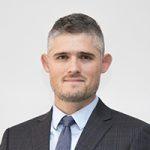

The Art of Sitting Well

Mike Binet
PT, DPT, PCS, CFMT, BSPTS, Physical Therapist

The Dubai hustle is demanding. It takes energy to climb the career ladder, keep pace with friends and raise upstanding little ones. Opportunities for rest can be rare and are all the more precious.
Sitting, however simple, is be a brief reprieve. You ponder on a park bench, enjoy a meal or take a moment in the office; pushing tired feet out, sliding down and melting into an inviting seat back. Yet, in every office, there is one. A towering figure, as if immune to gravity, sitting upright. Not in a moment’s guilty effort but he or she sits well for hours. How?
Sitting is a difficult, simple task. It is complex until it becomes familiar and therefore requires front-end effort. Like a perfect golf swing, sitting well produces rewards. Strong posture communicates interest, confidence and ability. Weak posture can communicate disinterest and complacency. Your choice to sit well, not only reduces risks of back and headache pain but, serves as an investment in how you project yourself.
Good news, sitting well involves resting. The key is aligning the structure of your body to stack like blocks. Each body is unique and the sweet-spot of “stacked” posture varies slightly. The path to finding upright resting posture begins with the following steps.
- Seat height – Start in a relaxed sitting posture with the seat surface slightly higher (about 1-2 cm) than the level of your knees. Yes, this contradicts the idea of 90 degree angles at knees and hips but most people have success with this approach.
- Position on the seat – Scoot slightly away from the seat back, allowing space between your legs and the edge of the seat.
- Position of the feet – Plant your feet directly under knees.
- Position of the pelvis – Rest on your “sit bones” and then lean forward slightly, moving pelvis, trunk and head as one relaxed unit. This is called “hip-hinging” with all body segments north of the hips moving together. The key is to feel weight transition subtly into your feet.
Sitting directly on the sit bones results in a perfectly vertical posture, which requires effort to sustain. Leaning forward slightly with weight through your feet establishes a “stacked“ alignment for your spine. - Test your “stacked” alignment – Ok, you’ve addressed the “seat, the feet and the lean”. Now, relax your trunk muscles. In stacked alignment, your body will rest in an upright posture. If you fall into a slouched posture, reset your position and experiment with slightly more or less forward lean.
Integrating this sequence into your daily routine takes thoughtful attention. I wish you the best in your path to perfect posture, projecting confidence and taking over the world.
There is a strong case for adults to sit in an upright posture. The stakes may be greater for children of determination. Peer-reviewed studies indicate that, for children with special needs, upright sitting posture directly impacts abilities to complete fine motor tasks, manage oral-motor function, engage in meaningful peer interactions and vie for the attention of teachers. One study demonstrated that educators interact less frequently with children who are not in an upright sitting position. Posture therefore has the potential to impact a child’s social, educational and functional goals.
Fortunately, the same “seat, feet and lean” tools apply. Children with special needs generally benefit from tailored adaptations under the direction of experienced physical or occupational therapists and the potential rewards are profound.


